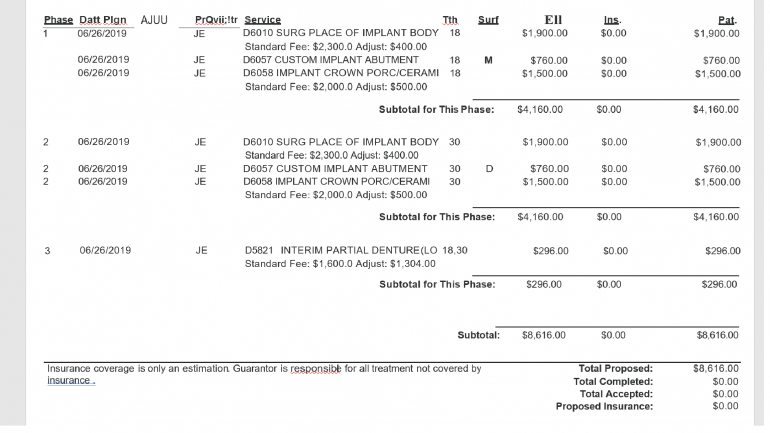
7260: Dental Code D7260: Oroantral fistula closure
Dental Code D7260, known as Oroantral Fistula Closure, refers to a specific dental procedure aimed at closing or repairing an abnormal opening that forms between the oral cavity and the maxillary sinus. An oroantral fistula can occur due to various factors, such as dental infections, trauma, or complications arising from tooth extractions.
Detailed Information about the Procedure and Steps
Dental Code D7260, Oroantral Fistula Closure, refers to a procedure aimed at repairing an abnormal opening between the oral cavity and the maxillary sinus. Through a series of steps, including diagnosis, preoperative preparation, anesthesia administration, accessing the fistula, debridement, closure technique selection, and postoperative care, dentists can effectively close oroantral fistulas. This procedure is crucial for preventing further complications and maintaining overall oral health. By understanding this dental code, patients can collaborate with their dentist to ensure successful closure and promote optimal oral well-being.
Diagnosis and Evaluation
Before commencing the oroantral fistula closure procedure, a thorough diagnosis and evaluation are essential. The dentist will conduct a comprehensive examination to accurately assess the condition. This examination usually involves a visual inspection of the affected area, dental imaging techniques such as X-rays, and in some cases, a computed tomography (CT) scan. These diagnostic tools help determine the size, location, and severity of the fistula, enabling the dentist to create an appropriate treatment plan.
Preoperative Preparation
Prior to the procedure, the dentist will discuss the details of the oroantral fistula closure with the patient. This discussion allows the patient to understand the process and address any concerns or questions. Additionally, the dentist will review the patient's medical history, current medications, and any known allergies to ensure a safe and effective procedure. By carefully considering these factors, the dentist can tailor the treatment plan to the specific needs.
Anesthesia Administration
To ensure the patients comfort during the oroantral fistula closure, anesthesia is administered. The type of anesthesia used depends on the complexity of the procedure and the individual needs. Local anesthesia is commonly employed, which involves numbing the area around the fistula to eliminate any pain or discomfort. In some cases, general anesthesia may be necessary, which induces a temporary state of unconsciousness, allowing the patient to remain pain-free throughout the procedure.
Accessing the Fistula
Once the anesthesia has taken effect, the dentist will carefully access the oroantral fistula. This is typically achieved by creating a small incision near the site of the opening. The incision allows the dentist to gain direct access to the fistula and prepare it for closure. It is important to note that this procedure is performed within the oral cavity, ensuring that no external scars are visible.
Fistula Debridement and Cleaning
Proper cleaning and debridement of the fistula are crucial for successful closure and prevention of future complications. The dentist will meticulously remove any debris, infected tissue, or foreign objects present within the fistula. This process ensures a clean and healthy environment for the closure procedure. Various instruments and techniques may be employed to ensure thorough cleaning and disinfection.
Closure Technique Selection
The choice of closure technique depends on factors such as the size, location, and complexity of the oroantral fistula. Common techniques include direct closure using sutures, local flaps, or the placement of grafts or biomaterials to facilitate healing. The dentist will assess a specific case and determine the most suitable technique. This decision takes into account factors such as the size of the fistula, the surrounding tissue condition, and the overall oral health of the patient.
Fistula Closure
With the chosen technique, the dentist will proceed to close the oroantral fistula. Sutures, or stitches, are meticulously placed to bring together the tissues surrounding the fistula. This promotes healing and effectively seals off the communication between the oral cavity and the maxillary sinus. Depending on the complexity of the case, multiple layers of sutures may be used to ensure a secure closure. The sutures used are typically absorbable, eliminating the need for their removal in a separate procedure.
Postoperative Care
Following the closure of the oroantral fistula, proper postoperative care is crucial for optimal healing and to minimize the risk of complications. The dentist will provide detailed instructions tailored to the patient’s specific case. These instructions may include guidelines on oral hygiene, dietary restrictions, and the use of prescribed medications. By following these instructions diligently, you can optimize your recovery and ensure the long-term success of the procedure.
Summary of Dental Code D7260
Dental Code D7260, Oroantral Fistula Closure, involves a comprehensive procedure aimed at repairing an abnormal opening between the oral cavity and the maxillary sinus. Through a series of steps, including diagnosis, preoperative preparation, anesthesia administration, accessing the fistula, debridement, closure technique selection, and postoperative care, dentists can effectively close oroantral fistulas. This procedure is essential for preventing further complications and maintaining overall oral health.
In conclusion, understanding Dental Code D7260 provides valuable insights into the importance of early diagnosis and appropriate treatment of oroantral fistulas. By collaborating with your dentist and following their guidance throughout the procedure and recovery process, you can ensure the successful closure of the fistula and promote optimal oral health. Remember, each case is unique, and your dentist will tailor the treatment plan to your specific needs, ensuring the best possible outcome.
Ready to revolutionize your dental expenses? Let Dr. BestPrice be your guide to affordable dental care.
